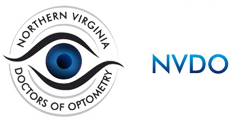Is your child struggling with reading or often rubbing their eyes? These might be signs of a vision problem. Vision therapy, a specialized treatment, can efficiently rectify vision conditions, especially those not adequately resolved with glasses or contact lenses. Recognizing the signs of visual problems in children can help you decide whether the treatment will be worth it.

What Is Vision Therapy?
Vision therapy is a form of physical therapy for the eyes and brain. It is a highly effective non-surgical treatment for common visual problems such as lazy eye, crossed eyes, double vision and some reading and learning disabilities. Vision therapy is not simply eye exercises — it’s a supervised and customized program designed to correct visual-motor and perceptual-cognitive deficiencies.
Signs Your Child Needs Vision Therapy
The following are some common signs your child might benefit from vision therapy:
- Difficulty Focusing. Check if your child has trouble maintaining eye contact or frequently loses their place while reading or doing other close-up work. This could be due to a condition known as convergence insufficiency, where the eyes struggle to work together for near tasks. Vision therapy can help to improve these skills, making it easier for your child to focus.
- Frequent Headaches or Eye Strain. Frequent squinting or complaints of headaches and eye strain may indicate that your child is experiencing vision difficulties. These symptoms could be due to refractive errors like nearsightedness, farsightedness or astigmatism. They could also be due to binocular vision problems, where the eyes don’t work together effectively, causing strain as they try to compensate. Vision therapy can help address these issues, reducing physical discomfort and enhancing visual function.
- Poor Eye Movement Control. If your child often skips lines or words while reading or finds it hard to track objects with their eyes, it could be a sign of poor eye movement control. This condition often interferes with the child’s reading speed and comprehension. As such, they find it harder to keep up with their peers in school. Vision therapy can aid in developing efficient eye movement control, enhancing their reading skills and overall academic performance.
- Difficulty With Depth Perception. If your child often misjudges distances or has trouble perceiving the depth of objects or images, it could be a sign of a depth perception problem. This can make tasks like catching a ball or climbing stairs more challenging. Vision therapy can help improve depth perception by training the eyes to work together more effectively. This enhances the brain’s ability to interpret visual information and discern distances correctly.
- Struggles With Hand-Eye Coordination. If your child frequently has trouble with tasks that require hand-eye coordination, such as catching a ball, writing or tying their shoelaces, this could indicate a vision problem. Inadequate visual-motor integration, the ability to coordinate visual input with physical movement, can interfere significantly with everyday tasks and schoolwork. Vision therapy can help improve hand-eye coordination, leading to better performance in sports, improved handwriting and greater ease in completing daily tasks.
Prioritize Your Child’s Eye Health
Remember that early detection is crucial in eye care. Whether your kid needs new eyeglasses or guidance with certain vision concerns, trust the experts at Northern Virginia Doctors of Optometry. Call us at (703) 660-9494 (Alexandria, VA) or (703) 467-9080 (Reston, VA). You may also fill out our contact page to make an appointment today.



























